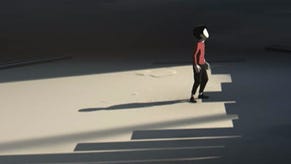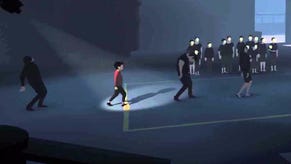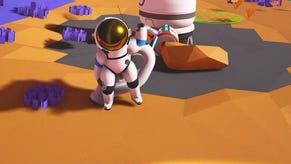Plumbing Inside's dystopian depths
Grim tales.
This article contains spoilers for the ending of Inside.
Whether it's teens baying for each other's blood in The Hunger Games, Judge Dredd exploding hoodlums, or the jaunty nuked-out wastes of the Fallout series, dystopian worlds have long entertained us with doom-laden speculation and ultra-violent hijinks.
They're becoming ever more popular too. Following the inauguration of US president Donald Trump last year, 1984 soared to the top of the bestsellers list. It would appear apocalyptic visions are trending, and our strange times provide ample nightmare fuel.
The sinister world of eerie puzzle platformer Inside nails the literal meaning of the word dystopia: the "not-good place". You guide a faceless child through ruined cityscapes, murky sewers and meatball-shaped misery. It all draws out into one uninterrupted haunted tableau, with not a single word, loading screen or UI button in sight.
Grim spectacles abound: armies of people march into cages, strange blasts surge through the landscape, police hurtle out of unmarked vans. Lonely and ominous, Inside lingers in the mind afterwards, like a distant dream you're unsure ever happened.
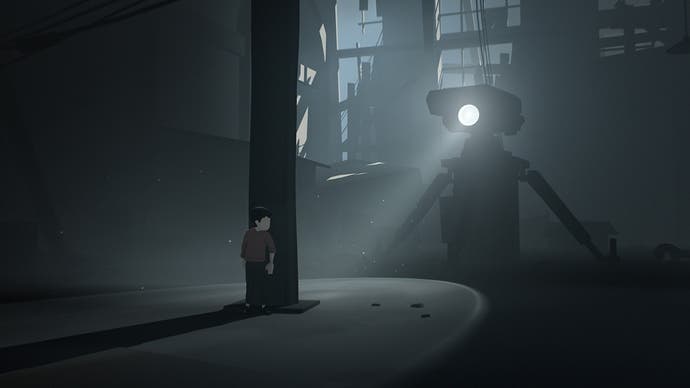
In Stalinist-inspired 1984, television screens and neighbours spied on the populace. Inside's watchful eyes are malevolent cameras bearing black whips. Should you step into the sights of a cursed camera, you are dragged off, visibly struggling, into impenetrable shadows.
Much like creepy predecessor Limbo, Inside is hell-bent on killing you. Numerous forms of demise await: zapped by lasers, snatched by electronic tentacles, crushed by a giant robot. None of Limbo's giant spiders or silhouettes wielding pointy sticks here; Inside's monsters are all man-made, but equally cruel.
Fully fledged sci-fi is ultimately steeped in reality, and so effective dystopian yarns too have human roots. In the terrifyingly prescient book and television series The Handmaid's Tale, every atrocity and law has a real-life historical precedent.
Sometimes, Inside allows the player to manipulate people with mind-control headsets that dangle ominously above - attached to a ubiquitous cable superstructure - and usually not in their best interest. Subjects under your dominion move in a loop synced to your movements, slamming into walls blindly or running full-force into a deep dark hole.
At one point, a clutch of chicks swarms gleefully toward a fan only to be ground up to solve a puzzle. Utilizing animals and people for your gain is a consistent motif of Inside. A power hierarchy is always apparent, and holding the reins is never as gleeful as it is in other games.
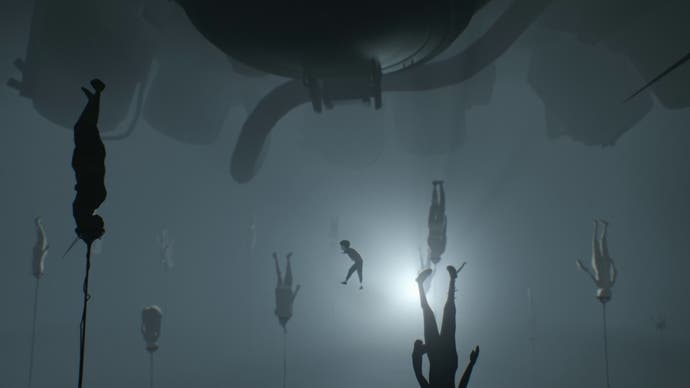
All of its haunted residents are anonymous - whether hostile, curious or bent to your will - with not a single face between them. The sparse character design brings to mind the "unperson" concept from 1984, which in turn was inspired by the Stalinist-era process of erasing "purged" people from photographs.
Not dissimilar to its population's faces (or lack of), Inside's scenery appears sapped: no bright colours, no pictures, no art. It creates an unsettling awareness of yourself as the other - distinct from the surrounding setting, unaccepted by its inhabitants - which is ramped up in the game's grotesque denouement.
In the game's final sequence, you are sucked into a monstrous blob made of misshapen limbs and anguish. The creature breaks through its water tank prison, a flood gushing onto a crowd of curious onlookers. With what appears to be wrenching agony, you roll and drag your fluid, fleshy new form through the building in a bid for freedom.
Carnage ensues: doors crack, glass shatters, people flee. Your myriad appendages indiscriminately absorb office supplies and humans alike. Individual parts fall off every so often, twitching forlornly in your wake. Notably, a group of people helpfully lift you onto a platform, only for you to later emerge in a stadium - faceless hordes with kids in tow watching - subsequently triggering a trap which plummets you into a sewer.
You swim away, eventually emerging only to careen through forest, finally landing on a sunlit beach. You stop moaning and heaving, and take stock of the beautiful view, light dancing on the distant shore. The game ends, with the player acquiring freedom of sorts. Or so it seems.
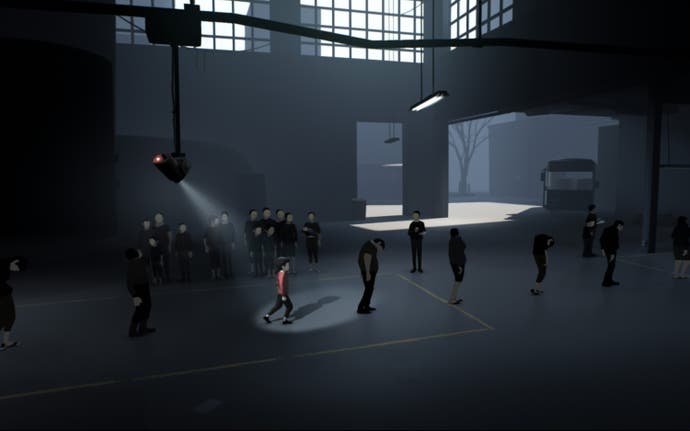
This scene is actually foreshadowed earlier in the game. During your daring escape in multi-limbed monstrosity form, you unceremoniously batter into a huge diorama encased in glass. It depicts an industrial building overlooking a sun dappled shoreline, just like the game's final moments.
With its stark, immersive world, Inside invites the player to stew on its sombre spectre, urges them to come despair a little in its murderous landscape. It's more an experience than an excavation of oppression, but like its genre pals, it too may hold a cautionary fable or two about the future.
Take for example the recent wave of immigrant toddlers detained in "tender age" shelters by the US government. The phrase itself shrewdly grasps the dialect of totalitarianism: it is an example of 1984's ambiguous, euphemistic language Newspeak - which was expertly designed by the novel's fictional ruling party to mask atrocities.
Sci-fi author Daniel A. Olivas wrote a story years ago picturing a great, golden wall embossed with images of Trump sprawling the US-Mexico border. Writer Sabrina Vourvoulias wrote a novel in 2012 in which immigrants are marked with distinctive tattoos to delineate their status. Both have expressed shock that their far-fetched ideas seem on the brink of ugly fruition.
Much like the Spanish Civil War critically shaped George Orwell's Animal Farm, so the actions of the Trump administration is sowing its own blood-soaked mythologies for artists and writers to glean.
These fictions serve not just as cautionary tales, but as instruction manuals: a lesson from the past dressed up as the future. They plumb our collective expanse of fear. Think of chaos, wherein bloodthirsty zombies reduce daily life to a Darwinian struggle full of unending guts and super-tough cardio. Or intensive order, where lobotomised hordes stroll ever faithfully into steel pens, and vast, unknowable machines churn out abominations.
Even the horrifying meatball has its own seeming real-life counterpart: the 'Whitechapel Monster'. Last year workers discovered an 820 foot 'fatberg' - a congealed clump of grease, wet wipes and nappies - lodged in London's sewers, where plenty others of its kind lurk unseen.
It will be curious to see how these events are processed by future media, whether visions of dystopia - steeped as they are in themes of tyrants and news corruption - will be to the next decade what themes of devil worship were to the 70s, or atomic radiation in the 60s. If the present times are anything to go by, the warnings of 1984 and its ilk are still yet to be fully heeded.





